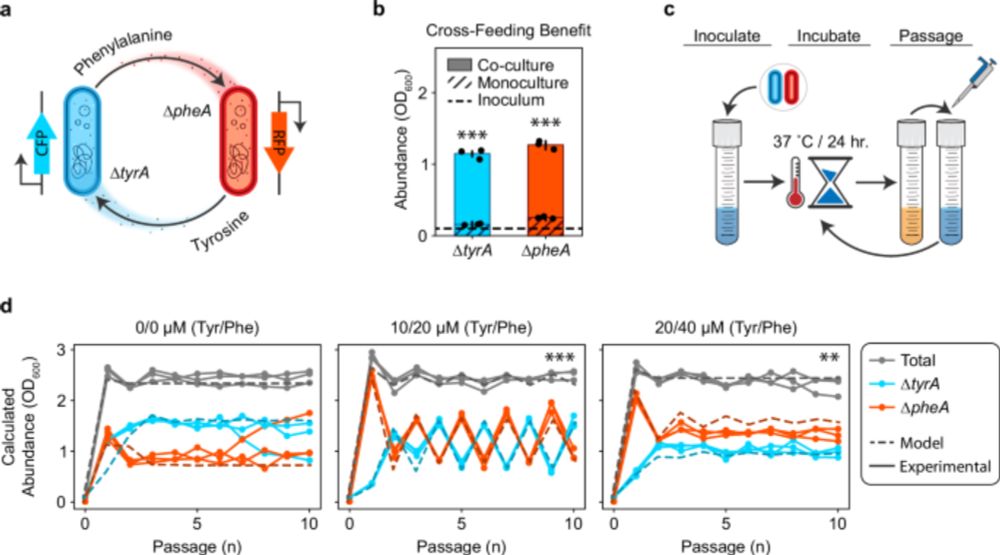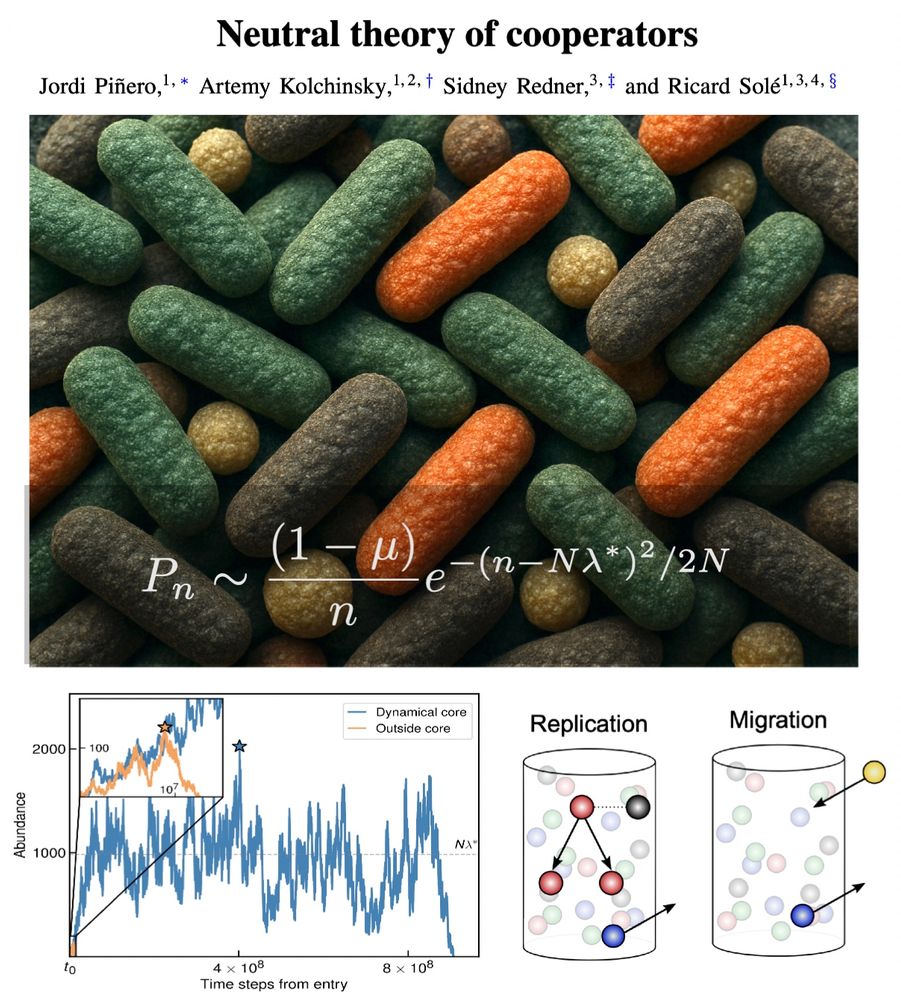
Postdoc with Alejandro Couce @ UPM, Spain
Using Experimental Evolution to look at mutational biases in bacteria!
Formerly of Mike McDonald @ http://mcdonald-lab.com
Research Gate Profile: https://t.co/xhw63knBCj
www.biorxiv.org/content/10.1...
www.jstage.jst.go.jp/article/biop...

www.jstage.jst.go.jp/article/biop...
journals.plos.org/plosbiology/...

journals.plos.org/plosbiology/...
journals.asm.org/doi/10.1128/...
@asm.org #JBacteriology

journals.asm.org/doi/10.1128/...
@asm.org #JBacteriology
Microbial Ecology
link.springer.com/article/10.1...

Microbial Ecology
link.springer.com/article/10.1...
www.biorxiv.org/content/10.1...

www.biorxiv.org/content/10.1...

@natcomms.nature.com from @oventurelli2.bsky.social
www.nature.com/articles/s41...

@natcomms.nature.com from @oventurelli2.bsky.social
www.nature.com/articles/s41...
Can we predict which bacteria will turn into #superbugs? 🦠
A study led by Dr. Alejandro Couce and published in PLoS Genetics (@plos.org) shows that a single DNA change can open “bridges” to modern resistances.
🔗 Read more here: https://shorturl.at/TRRwD

Can we predict which bacteria will turn into #superbugs? 🦠
A study led by Dr. Alejandro Couce and published in PLoS Genetics (@plos.org) shows that a single DNA change can open “bridges” to modern resistances.
🔗 Read more here: https://shorturl.at/TRRwD
🧬 Led by Alejandro Couce, researchers of the CBGP used experimental evolution to predict how the superbug enzyme KPC-2 could outsmart antibiotics
⚔️The study, published at @natecoevo.nature.com, lets us block it and protect our antibiotics
📎 shorturl.at/F7oOa

🧬 Led by Alejandro Couce, researchers of the CBGP used experimental evolution to predict how the superbug enzyme KPC-2 could outsmart antibiotics
⚔️The study, published at @natecoevo.nature.com, lets us block it and protect our antibiotics
📎 shorturl.at/F7oOa
Don’t ask "when is it coevolution?" — ask "how?"
doi.org/10.1093/evol...

Don’t ask "when is it coevolution?" — ask "how?"
doi.org/10.1093/evol...
www.microbiologyresearch.org/content/jour...
www.microbiologyresearch.org/content/jour...
Thread 1/n

Thread 1/n


Historical effects during experimental evolution of multicellularity in Saccharomyces cerevisiae,
by Joleen Khey and Mike Travisano
academic.oup.com/evolut/artic...
Historical effects during experimental evolution of multicellularity in Saccharomyces cerevisiae,
by Joleen Khey and Mike Travisano
academic.oup.com/evolut/artic...

rdcu.be/eFrrc

rdcu.be/eFrrc
go.nature.com/4mTnRzG

go.nature.com/4mTnRzG


